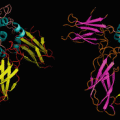and Winfried G. Rossmanith2
(1)
Lenzkirch, Germany
(2)
Ettlingen, Germany
3.2.1 Hormonal Effect
3.2.2 Neurotransmitters
3.2.3 Cytokines/Lymphokines
3.2.5 Pheromones
3.5 Hormone Classes
3.5.1 Protein/Peptide Hormones
3.5.3 Amino Acid Derivatives
3.1 The Nature of the Endocrine System
Protozoans sense signals from the environment on their cell surface and adapt to these messages. They do not require the kinds of messages which help cells in multicellular organisms to communicate information to one another about their conditions, their requirements, and how they can serve other cells. Once multicellular organisms with different organs and their different functions had developed from protozoans, it became necessary to develop message transport within the organism. Two systems evolved: the nervous system and the endocrine system. There is a third system, the immune system, which also processes information.
3.2 What Is a Hormone?
Hormones are signals. They announce to the organism the state of the secreting cell as well as the state of the hormone-producing organ; they are like semaphore flags. There is a set of cells restricted to the target organ to recognize the semaphore flag. Thus, the effect of a hormone is solely within the target organ. If cells other than those intended start to react, pathological disorders might develop—for example, endometriosis: only the epithelium of the uterus should react to estrogens by growing in order to allow nidation of the trophoblast. When cells outside the uterus, such as in the peritoneum and in other organs of a woman, start to react to the periodic estrogen signals by growing and ablation, the woman feels great pain and experiences internal bleeding.
Hormones are transferred from the organ of release to the target organ by means of the blood. Some hormones need a specific vehicle for this transport; however, most hormones move without a vehicle through the circulation. During transport, hormones are prone to enzymatic degradation. To reach the target organ in sufficient concentrations, many hormones are released by the coordinated action of many cells. The release of these hormones is achieved in pulses.
3.2.1 Hormonal Effect
The process by which a substance is released in one organ and transferred via the blood to its target organ is called an endocrine process: at one place synthesis and release occur, then undirected transport in the blood occurs, and finally reactivity occurs at a distant cell or organ. The science of hormones (of endocrine-acting drugs, of internal secretion) was thus named endocrinology.
Exocrine release, as opposed to endocrine secretion into the blood, characterizes gland production—for example, release into the oral cavity, into the gut lumen, or across the skin. Furthermore, odorant release, territory marking, and pheromone secretion are exocrine processes as well.
A mediator which affects neighboring cells—for example, within a gland or in the intestinal wall, in a lymph node, or within the placenta—acts in a paracrine manner. Most regulators with very short biological half-lives show this paracrine effect.
Hormones, however, are not very stable in blood. Hypothalamic releasing (RH) hormones such as corticotropin RH, thyrotropin RH, and gonadotropin RH have half-lives in blood below 10 min; owing to the short distance to the target organ—the pituitary gland (only 2–3 cm away)—the life span of these hormones is sufficiently long for them to reach the target organ in pulses. The simultaneous arrival of hormones in concentrations above the level needed for activation results in the endocrine functions.
When an effector substance expresses its effects on the releasing cell—for example, in tumor cells, in activated lymphocytes, or again, in the placenta at the interface of maternal and fetal blood—these actions are called autocrine actions.
3.2.2 Neurotransmitters
Hormones which act via the blood circulation must be distinguished from neurotransmitters such as GABA, acetylcholine, and opioids, whose effects are concentrated on the synaptic cleft between nerve cell and target cell. There are, however, some substances that act as hormones distantly from where they have been released and function as neurotransmitters as well: dopamine and noradrenaline (norepinephrine). Other hormones such as vasopressin (antidiuretic hormone) and neuropeptide Y are also active as neurotransmitters.
3.2.3 Cytokines/Lymphokines
Cytokines and lymphokines are messengers and regulators within the immune system. Cells of the immune system are widespread over the entire organism and are often mobile, in contrast to cells of the endocrine system, which are fixed in defined organ structures. With respect to their distant action, cytokines and lymphokines resemble hormones, and since the detection of T-cell growth factors more than 30 years ago, the similarity between cytokines and interleukins, and hormones has been established. Hormones, in addition, act on cells of the immune system, and the latter express hormone receptors. We would like to maintain the distinction of the very complex immune system and its mediators from the endocrine system in order to distinguish the fundamental mechanisms from less obvious mechanisms.
Stay updated, free articles. Join our Telegram channel

Full access? Get Clinical Tree






